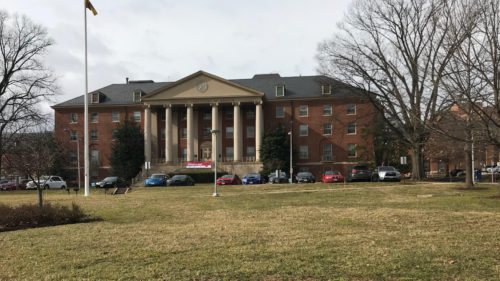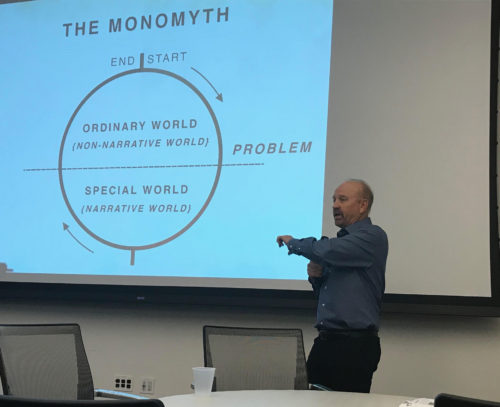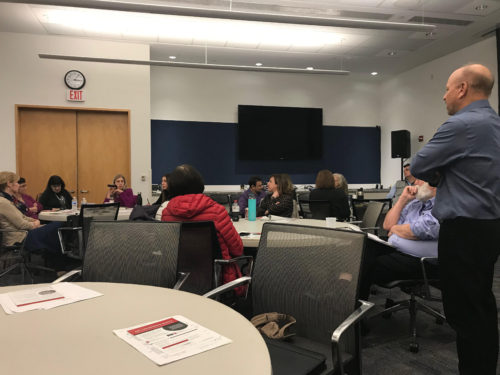More Conversations with Randy Olson about the use of narratives in science
Bill Dennison ·

I attended a Story Circles session at the National Institutes of Health in Bethesda, Maryland on 7 Feb 2019. My friend and colleague Randy Olson was conducting a one day training program and I rarely miss an opportunity to connect with Randy, based on our intertwined career journeys and our mutual interest in improving science communication. As usual, a conversation with Randy sparked off a suite of interesting thoughts, and this blog attempts to capture some of these thoughts.

1.Narrative Index: Randy has been progressing the development of a Narrative Index, a topic of previous blogs by both of us. The narrative index focuses on a ratio of ‘buts’ vs. ‘ands’, based on the ‘. . . and . . . but . . . therefore . . .’ (ABT) that Randy developed in his book ‘Houston, We Have a Narrative’. Randy has analyzed numerous passages from a range of writings, and found a spectrum of narrative index from mundane instruction manuals with poor narrative structure to the most famous speeches and writings with excellent narrative structure.
2. The Power of One: Randy illustrated an example of a fund raising effort that focused on helping a single underprivileged child compared to helping two to many children. Nicholas Kristof showed that people were much more willing to help a single child than many children, and even just having two children instead of one reduced willingness to help. I saw a parallel with something we had learned from working on report cards with our colleagues at Opinion Works that recommending a single conservation action was more effective than a providing a list of multiple actions.
3. The YABT template: We have learned to start off our science communication stories by addressing the question “Why?”. The audience needs to be told why they should care up front, so to remind ourselves to incorporate “Why?” into the narrative set up used in the introductory statements linked by “and”, the ABT narrative template can be amended to YABT.
4. Moving and thinking vs. sitting and thinking: Randy made a comment about how his insights were often not when he was sitting and thinking, rather when he was surfing and bicycling. I immediately thought about my use of a standing desk, and having insights while swimming or walking. And then I recalled that Charles Darwin interspersed regular walks in his garden while writing and Albert Einstein would wander around Princeton, deep in thought.
5. Coming at things both ways: One of the powerful techniques that Randy employs is to develop an ABT statement by starting off with too complicated ABT statement (usually produced when writing), followed by an overly simplistic ABT (usually produced by verbalizing). The art of obtaining a healthy balance between developing understanding vs. attention grabbing can be achieved through this iterative process. Randy pointed out that the writing team for “The Office” were not allowed to write anything down in the first week in a three week writing session.
6. Don’t let the perfect be the enemy of the good: Randy emphasized that you can overthink the and/but/therefore (ABT) template, attempting to be perfect. He mentioned that ABTs should be viewed as approximations and that there is no perfect ABT. ABTs attempt to balance being concise with being compelling. He viewed it as proving and playing with the narrative until you land on good narrative.
7. Make America Great Again: Randy has previously pointed out that Donald Trump’s slogan, Make America Great Again, was an implied ABT statement: America was great AND it was based on a suite of values, BUT these values have eroded and America is not great anymore, THEREFORE let’s make America great again. The insight that I gained from Randy this time was in the word ‘again’. Randy referred to the Joseph Campbell’s “Hero’s Journey” where the hero starts in the ordinary world, answers a call to adventure, journeys out of the ordinary world through a series of adventures until returning to the ordinary world. So the Trump slogan that includes the word ‘again’ signifies the return to the ordinary world.

8. Read ABTs out loud slowly, and repeat: Randy would have people read their ABTs out loud out which is a good way to insure that they were concise. He always asked people to read them again, slowly to savor the words and allow a focus on the narrative. I think that the first reading is for content and the second reading is for structure.
9. Randy has been recently featured in a couple of very nice videos, one created by the American Association for the Advancement of Science and another by the National Parks Service. Randy and I compared notes on the different people and organizations that we found amenable to working with and concluded that the National Park Service were consistently great partners. We also have found advanced graduate students more interested in science communication than beginning students.

We each generated some example ABTs in our groups for review and
comment. My ABT statement was following:
My science communication group used to focus on developing
science visualization tools. And using these tools we were able to develop
visually appealing science communication products. But our visually appealing
products weren’t as effective as we had hoped. Therefore, when we reconnected
with Randy Olson and learned about narrative structure, we now combine
visualizations with narrative and have found that our science communication
products are better received.
About the author
Bill Dennison

Dr. Bill Dennison is a Professor of Marine Science and Interim President at the University of Maryland Center for Environmental Science (UMCES).
Next Post > Bill Dennison's 500th Blog
Comments
-
Atika 4 months ago
Thank you for sharing this great information with us, i really appreciate your post!